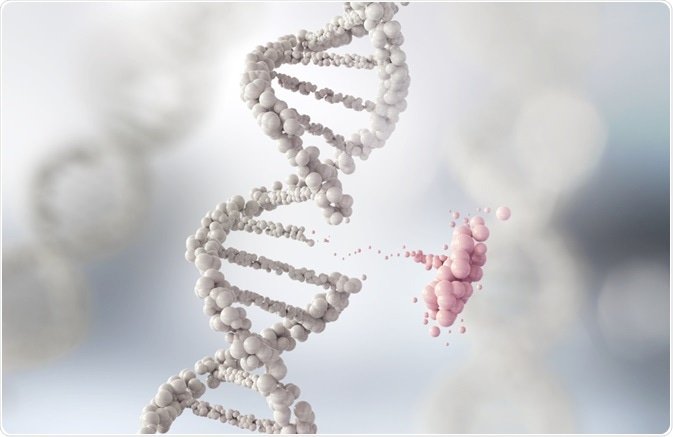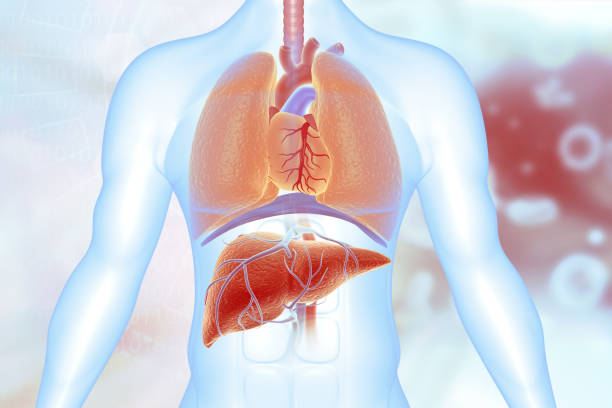Imagine a world where genetic diseases like cystic fibrosis, Huntington’s disease, and muscular dystrophy are nothing more than footnotes in medical textbooks. A world where parents can ensure their children are born without the risk of inherited disorders, or even choose physical traits like height or eye color. Picture an era in which aging slows dramatically, mental acuity stays sharp well into the twilight years, and immunity to deadly viruses is coded into your DNA. This isn’t science fiction anymore—it’s the promise and peril of genetic engineering in humans.
Genetic engineering, once the domain of speculative fiction and futuristic fantasies, is now a tangible and rapidly evolving scientific frontier. CRISPR-Cas9, the gene-editing technology that took the world by storm in the 2010s, has made it possible to alter DNA with unprecedented accuracy and efficiency. The question is no longer whether we can edit the human genome—it’s whether we should, and if so, how far we should go.
This debate isn’t just technical—it’s deeply ethical, social, philosophical, and political. At its heart lies a fundamental tension between human aspiration and caution, between potential benefit and possible catastrophe. In this article, we’ll take a journey through the science, the promise, the pitfalls, and the multifaceted debate surrounding genetic engineering in humans.
A Brief History of Gene Editing
To understand the controversy, we first need to understand the science. Genetic engineering in humans involves directly altering the genome—the complete set of DNA that defines us. While traditional medicine treats symptoms or replaces faulty organs, genetic engineering rewrites the biological code itself.
The first steps toward this future began with the discovery of DNA’s structure in 1953 by James Watson and Francis Crick, building on the work of Rosalind Franklin. From there, scientists gradually learned how to isolate, sequence, and manipulate genes. By the 1970s, recombinant DNA technology made it possible to cut and paste DNA from different organisms. The 1990s saw the Human Genome Project launch, a global endeavor to map all human genes, completed in 2003.
But the real breakthrough came with CRISPR-Cas9—a powerful gene-editing tool derived from a natural bacterial defense system. Discovered in 2012, CRISPR allows scientists to target specific DNA sequences and make precise edits. Unlike older methods, which were clumsy and error-prone, CRISPR is fast, accurate, and relatively inexpensive.
Since then, the technology has exploded in popularity. Labs around the world are experimenting with using CRISPR to correct genetic diseases in cells and animal models. In 2018, the world was stunned when a Chinese scientist, He Jiankui, announced that he had created the world’s first genetically edited babies—twin girls whose DNA was modified to resist HIV infection. The global scientific community responded with shock, anger, and a renewed urgency to address the ethical questions that now loomed large.
The Promise of Genetic Engineering
Supporters of human genetic engineering often start with the obvious: the potential to eliminate genetic diseases. Conditions like sickle cell anemia, Tay-Sachs disease, and Duchenne muscular dystrophy result from known mutations. If we can fix those mutations, we can cure these diseases at the genetic level—permanently. Unlike treatments that must be repeated or managed over time, gene editing could offer a one-time correction.
Beyond curing disease, there’s the possibility of enhancement. Could we use genetic engineering to boost intelligence, physical strength, memory, or resistance to illness? Might we slow the aging process, extend lifespan, or even eliminate certain vulnerabilities like cancer? The allure is powerful, especially in a world where medicine is already trending toward personalization.
Moreover, gene editing might allow us to pass these benefits on to future generations. Inheritable edits—changes to the germline, the DNA of embryos or reproductive cells—mean that children and their descendants could inherit protection from disease. This could reduce the burden on healthcare systems and improve quality of life across societies.
There’s also a compelling case for equity. Some advocates argue that denying access to gene editing would be unethical if it could spare people from suffering. Why should a child be born with a devastating disease when science could prevent it? Why shouldn’t parents have the right to give their children the best genetic start in life?
The Perils of Playing God
But with great power comes great complexity—and controversy. Critics of human genetic engineering warn that we’re venturing into deeply dangerous territory, both scientifically and morally.
First, there are the medical risks. CRISPR is remarkably accurate, but it’s not perfect. “Off-target” effects—unintended mutations caused by editing—could lead to unpredictable consequences, including new diseases or developmental problems. Our understanding of the genome is still incomplete; genes often interact in complex ways, and editing one part of the DNA can have ripple effects elsewhere.
These risks are magnified when editing embryos or reproductive cells. Changes to the germline are irreversible and heritable, meaning mistakes affect not just the individual but all future descendants. Once released into the human gene pool, harmful edits might be impossible to undo.
Then there’s the issue of consent. An adult undergoing gene therapy can weigh the risks and give informed consent. But an embryo cannot. Is it ethical to make permanent changes to a person’s genome without their permission, even for ostensibly good reasons?
There’s also the specter of eugenics. If we begin selecting for traits—like height, intelligence, or appearance—we risk reintroducing discredited ideas about genetic “superiority.” Societies might pressure parents to engineer children who conform to certain ideals, exacerbating social inequalities and stigmatizing those born “naturally.” The rich might access enhancements, creating a genetic elite, while the poor are left behind—a biological class divide.
Designer Babies: Dreams and Dystopias
The concept of “designer babies” is one of the most emotionally charged aspects of the debate. The phrase evokes visions of futuristic nurseries where parents browse catalogs of traits: blue eyes, high IQ, athleticism, creativity. While this remains speculative, the line between therapy and enhancement is already blurring.
Consider this: preventing a child from inheriting a life-threatening disease is widely seen as justifiable. But what about editing for resistance to the flu? Or boosting memory capacity? Or increasing height to improve athletic potential? At what point does healing become upgrading?
Critics warn of a slippery slope. Once the door to enhancement is opened, market forces and social pressures may drive rapid expansion. If certain traits are seen as desirable—whether intelligence, beauty, or emotional stability—parents may feel compelled to choose them, not out of vanity, but to ensure their child isn’t disadvantaged. This could lead to homogenization, loss of diversity, and a narrowing of what society deems “normal” or “acceptable.”
Moreover, the psychological impact on genetically edited individuals could be profound. Would they feel pressure to live up to engineered expectations? Would they question the authenticity of their identity or achievements? Would naturally conceived people be seen as inferior or “unimproved”?
Legal and Regulatory Frontiers
The legal landscape surrounding human genetic engineering is a patchwork. Some countries, like Germany and France, have strict prohibitions on germline editing. Others, like the United States, permit research but prohibit clinical applications involving embryos. China, where the CRISPR baby scandal occurred, has implemented tighter regulations following global outcry.
At the international level, various scientific bodies and ethics councils have called for moratoriums or cautious regulation. In 2019, a group of leading scientists and ethicists proposed a global moratorium on heritable genome editing until a broad societal consensus can be reached.
However, regulation is challenging in a globalized world. Scientific research crosses borders, and enforcement varies widely. Some fear a “genetic tourism” industry could emerge, where parents travel to countries with looser laws to access forbidden procedures. Without global cooperation, regulation may be difficult to enforce and easy to evade.
Ethical Theories and Philosophical Dilemmas
The ethical landscape of human gene editing is vast and fraught with dilemmas. Utilitarian arguments focus on maximizing benefit—curing disease, reducing suffering, and improving life quality. From this perspective, gene editing is morally justified, even obligatory.
Deontological thinkers, however, emphasize duties and rights. They may argue that we have no right to alter human nature in ways that compromise dignity or autonomy. Editing the germline without consent violates a basic moral principle, even if the outcomes are positive.
Virtue ethicists might focus on the kind of society we become if we normalize genetic enhancement. Do we want to be a culture obsessed with perfection, or one that values diversity, empathy, and resilience?
Religious perspectives vary widely. Some see gene editing as playing God, violating the sanctity of creation. Others view it as a gift of knowledge that must be used responsibly to alleviate suffering. For example, many Jewish and Islamic scholars have expressed cautious support for therapeutic editing, while the Catholic Church generally opposes germline modification.
Genetic Justice and Social Implications
The broader societal implications of human genetic engineering raise urgent questions about fairness, justice, and equality. If only the wealthy can afford enhancements, existing inequalities could deepen dramatically. Education, healthcare, and job markets might become stratified along genetic lines.
Moreover, cultural attitudes toward disability could shift. If genetic conditions can be “corrected,” will society become less tolerant of those who live with them? Will support systems erode as expectations change?
There’s also the risk of genetic discrimination. Employers, insurers, and governments might misuse genetic information to categorize, exclude, or penalize individuals. The dystopian vision of a “Gattaca”-like world, where DNA determines destiny, is not far-fetched if safeguards are not put in place.
The Future of Human Evolution
One of the most profound implications of genetic engineering is that we may take control of our own evolution. For billions of years, natural selection has shaped life on Earth. Now, humanity faces the possibility of directing its genetic future—not through random mutation and survival, but through conscious design.
This raises exhilarating possibilities and existential risks. Could we eradicate suffering and extend human capacities? Could we, in our ambition, unleash unforeseen consequences that imperil our species?
Bioethicist Leon Kass warns of “the wisdom of repugnance”—the idea that our instinctive unease about certain interventions might reflect deep moral truths. Others argue that fear should not impede progress, and that with proper oversight, humanity can responsibly navigate this new frontier.
A Call for Inclusive Dialogue
Ultimately, the debate around human genetic engineering isn’t just for scientists or ethicists. It affects everyone, and it demands a broad, inclusive, and ongoing conversation. Citizens must be informed and engaged. Policies must be crafted not only by experts but by democratic societies reflecting diverse values and priorities.
We must ask not only what we can do, but what we should do—and who gets to decide. We must balance innovation with wisdom, aspiration with humility. And we must recognize that how we choose to shape our biology will, in turn, shape our humanity.
Conclusion: Standing at the Crossroads
The debate around genetic engineering in humans is far from settled, and perhaps it never will be. We are standing at a historic crossroads. On one path lies the potential to eliminate disease, extend life, and transform the human condition. On the other lies the risk of unintended harm, inequality, and ethical confusion.
Science has given us extraordinary tools. But it cannot tell us how to use them. That task falls to all of us—to engage, to question, to reflect, and to imagine the kind of future we want to build. The story of human genetic engineering is still being written. Whether it becomes a triumph of wisdom or a cautionary tale of hubris will depend on the choices we make now.






